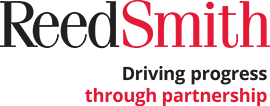Introduction
In March of this year, the Staff of the SEC Division of Corporation Finance issued a no-action letter that makes it much less painful for private fund managers, independent sponsors and companies to make securities offerings under Rule 506(c) of Regulation D using public advertising, such as websites, media placements and group emails. A copy of the no-action letter can be found online.
Key elements of the no-action position
- Minimum investment thresholds. A commitment of at least $200,000 in cash (or the right to call cash) for natural persons and at least $1 million for entities is deemed sufficiently high to serve as objective evidence of accredited investor status.
- Written self-certification. The investor must furnish a written representation (e.g., in the subscription agreement or a separate certificate) that it qualifies as an accredited investor and that the committed funds are not financed by a third party for the specific purpose of making the investment.
- No “look-through” to third-party documentation. So long as the investor meets the applicable minimum investment amount and provides the required self-certification, the issuer need not review tax returns or brokerage statements or obtain third-party confirmations from lawyers, accountants or verification service providers.
- No actual knowledge of contrary facts. The no-action relief is unavailable if the issuer is aware of information suggesting the investor is not an accredited investor or is financing the investment for the specific purpose of participating in the offering.
- Flexibility for capital-call structures. The investment can be satisfied through an immediate cash contribution or a binding commitment subject to capital calls over time, aligning the verification method with common private fund and independent sponsor economics.
Practical implications
The guidance removes the primary obstacle that has historically limited the use of Rule 506(c) – the obligation to collect sensitive financial information from prospective investors. By allowing private funds and companies to rely on investor self-certification coupled with a reachable minimum investment amount, the Staff has effectively leveled the playing field between Rule 506(c) and the more familiar Rule 506(b), while preserving the substantial advantages of Rule 506(c): unrestricted public advertising, broader reach to prospective investors and greater compliance certainty.
Private fund sponsors and independent sponsors that already impose minimum commitments at or above the $200,000/$1 million thresholds should find Rule 506(c) considerably more attractive. At the same time, managers who historically relied on Rule 506(b) to avoid the verification burden may now wish to reassess their offering strategy, as the ability to engage in public advertising could materially expand their investor base without increasing administrative costs.
Registered investment advisors offering funds or other investment products using Rule 506(c) must continue to comply with the SEC Marketing Rule. The Marketing Rule contains numerous restrictions on advertising using hypothetical performance, third-party endorsements, case studies and similar items.
Potential next steps
- Review offering documents. Update subscription agreements to include the required self-certification language and minimum commitment provisions.
- Adjust marketing practices. Evaluate whether general solicitation – now more practicable under Rule 506(c) – could enhance capital-raising efforts (e.g., website postings, webinars, social media, press releases).
- Train personnel. Ensure that investor-facing teams understand the new verification pathway and the continuing obligation to remain free of actual knowledge of contrary facts.
- Monitor compliance. Implement procedures to document receipt of self-certifications, track minimum commitments and highlight potential red flags indicating nonaccredited status or financed commitments.
- Consider fund economics. For sponsors currently requiring commitments below the new thresholds, evaluate whether modestly higher minimums could unlock the benefits of Rule 506(c) without deterring target investors.
Conclusion
The SEC Staff’s no-action relief marks a significant development in private-placement practice since the adoption of Rule 506(c). By endorsing self-certification paired with a substantial minimum investment as a “reasonable” verification method, the Staff has provided a clear, user-friendly road map for private funds and companies seeking to capitalize on the marketing flexibility of general solicitation while maintaining full compliance with Regulation D. Sponsors and other market participants should move quickly to incorporate this guidance into their capital-raising playbooks.
This client alert is for general information only and does not constitute legal advice. Please contact one of the authors to discuss how the SEC’s new guidance may affect your specific offerings.
Client Alert 2025-203
